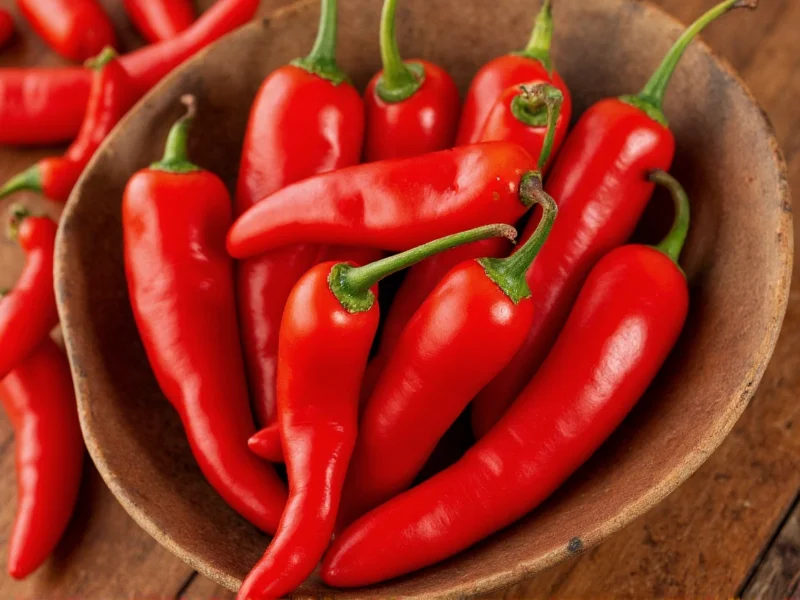Understanding the scotch bonnet taste profile reveals why this fiery pepper has become essential in tropical and coastal cuisines worldwide. Native to the Caribbean and West Africa, this wrinkled, lantern-shaped chili offers far more than simple heat—it delivers a sophisticated flavor experience that transforms dishes when used thoughtfully.
Decoding the Scotch Bonnet Flavor Profile
When evaluating what does a scotch bonnet taste like, we must consider multiple dimensions beyond just heat. The scotch bonnet's flavor unfolds in distinct stages:
- Initial impression: Bright, almost citrusy fruitiness hits first—think passion fruit or mango
- Middle notes: Distinct tropical fruit flavors emerge, particularly apricot and guava
- Heat development: Intense but gradual burn builds (peaking at 30-45 seconds)
- Finish: Complex floral notes with subtle smokiness linger after the heat subsides
This layered flavor progression makes scotch bonnets particularly valuable to chefs seeking scotch bonnet pepper culinary applications that go beyond mere spiciness. The fruit-forward profile complements seafood, tropical fruits, and coconut-based dishes in ways that simpler hot peppers cannot.
Heat Level and Scoville Scale Comparison
While scotch bonnets register 100,000-350,000 Scoville Heat Units (SHU), their heat perception differs significantly from other peppers at similar measurements. The accompanying fruitiness actually tempers the perceived heat, making them seem slightly less intense than habaneros despite comparable Scoville ratings.
| Pepper Variety | Scoville Range | Flavor Characteristics |
|---|---|---|
| Scotch Bonnet | 100,000-350,000 SHU | Tropical fruit, floral notes, citrus undertones |
| Habanero | 100,000-350,000 SHU | Citrus, apricot, slightly smoky |
| Ghost Pepper | 855,000-1,041,427 SHU | Fruity then intense, lingering burn |
| Jalapeño | 2,500-8,000 SHU | Grassy, bright, moderate heat |
Scotch Bonnet vs. Habanero: Understanding the Taste Difference
Many confuse scotch bonnets with habaneros due to their similar appearance and heat range. However, the scotch bonnet taste compared to habanero reveals important distinctions:
- Shape: Scotch bonnets are squatter with a distinctive "bonnet" shape; habaneros are more oval
- Flavor complexity: Scotch bonnets offer more pronounced tropical fruit notes
- Heat distribution: Scotch bonnets often have more consistent heat throughout the flesh
- Regional variations: Caribbean scotch bonnets tend fruitier than West African varieties
Professional chefs note that how scotch bonnet pepper tastes when cooked develops richer caramelized notes compared to habaneros, making them preferable for slow-cooked stews and braises.
How Cooking Methods Affect Scotch Bonnet Flavor
The scotch bonnet raw vs cooked taste profile transforms significantly with different preparation methods:
- Raw: Maximum fruitiness with sharp, immediate heat; ideal for fresh salsas and uncooked sauces
- Roasted: Develops smoky-sweet complexity; heat becomes more rounded and integrated
- Boiled/Simmered: Heat diffuses throughout liquid; fruit notes mellow into background
- Fermented: Creates complex umami notes while preserving heat; essential for traditional Caribbean hot sauces
When working with scotch bonnet pepper flavor in recipes, remember that removing seeds reduces heat by approximately 70% while preserving most flavor compounds. For authentic Jamaican jerk or Ghanaian shito, the whole pepper (seeds included) delivers the intended flavor experience.
Practical Tips for Using Scotch Bonnets
To maximize the scotch bonnet taste benefits while avoiding common pitfalls:
- Start small: One pepper often suffices for 4-6 servings; you can always add more
- Balance acidity: The fruitiness shines when paired with lime or tamarind
- Pair with cooling elements: Coconut milk, mango, or avocado counterbalance the heat
- Handle safely: Wear gloves when preparing; avoid touching face or eyes
- Store properly: Freeze whole peppers for up to 6 months without flavor degradation
Understanding what does scotch bonnet pepper taste like in different dishes helps home cooks replicate authentic Caribbean flavors. In traditional Jamaican patties, the pepper's fruitiness complements the flaky pastry and spiced meat filling. In West African groundnut soup, it provides necessary heat while enhancing the nutty base flavors.
Avoiding Common Flavor Mistakes
Many home cooks struggle with scotch bonnet taste balance due to these common errors:
- Overprocessing: Blending creates more intense heat dispersion than chopping
- Adding too early: Heat compounds break down with prolonged cooking
- Ignoring regional variations: Scotch bonnets from different areas have distinct flavor profiles
- Not tasting as you go: Heat levels vary significantly between individual peppers
For those exploring scotch bonnet pepper substitutes and flavor equivalents, habaneros provide closest heat match but lack the distinctive tropical notes. A combination of habanero plus mango or apricot preserves better approximates the authentic scotch bonnet experience.
Conclusion: The Unique Value of Scotch Bonnet Flavor
The scotch bonnet pepper distinctive taste represents a perfect marriage of intense heat and sophisticated fruitiness that has made it indispensable in tropical cuisines. Unlike many hot peppers that serve primarily as heat sources, scotch bonnets function as genuine flavor ingredients that enhance rather than overwhelm dishes. When used thoughtfully—respecting both its heat potential and complex flavor profile—this remarkable pepper can transform ordinary meals into authentic culinary experiences that showcase the best of Caribbean and West African cooking traditions.











 浙公网安备
33010002000092号
浙公网安备
33010002000092号 浙B2-20120091-4
浙B2-20120091-4